This is part 2 of a 5 part tutorial. Click this to read part 1 about cutting.
| anna_front_bodice.docx |
| annas_skirt_motifs.docx |
There is one measurement for the bodice motif (C) and two measurements for the skirt motif (A & B). These motifs will most likely need resizing.
These are the measurements I recommend for these dress sizes, given in decimals so you can do the enlarging calculations more easily .
Child 3 - 4: (C) 5.62", (B) 8", (A), 6"
Child 5 - 6: (C) 5.62", (B) 9", (A), 7"
Girl 7 - 8: (C) 6.5", (B) 11", (A), 8.25"
Girl 10 - 14: (C) 7.25", (B) 11.75", (A), 8.75"
Adult: (C) 9", (B) 13", (A), 9.5"
To figure out what percentage to enlarge the motifs. Measure what the A, B, and C are on after the artwork is printed out. Then figure out what size you want those measurements to be and go to this on line Proportion Calculator. There you will find a calculation with 4 boxes.
Fill these boxes in as follows using decimals for any fractions. In the upper left box, put in the size your print out measures, in the box just below fill in the number (100) which stands for one hundred percent. Then in the upper right box, put in the size you want the motif to be. Hit the word "calculate" and the answer will be the percentage amount the artwork needs to be enlarged. This number will probably have to be rounded to reduce the number of decimal points. Enter this number at a copy machine that enlarges and reduces where it asks for percentages to get a copy of the artwork in the size you need.
I am planning to make 10 repetitions of the skirt motif.
It is best to put the motifs on the skirt first, starting at the back. So, by the time you work your way around to the front and especially when you do the bodice motif, you will be good a this.
When I was ready to sew, there were many more pins than you see in this photo.
And, you can start cutting out the motifs. I like to only cut a few at a time. I find it less tedious and there is less of a chance tiny pieces will get lost.
Fuse the pieces on with your iron following the instructions for the fusible webbing you are using.
Time for the bodice.
So that is what I did. But, embroidering dots is also a good method.
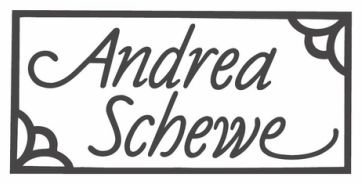
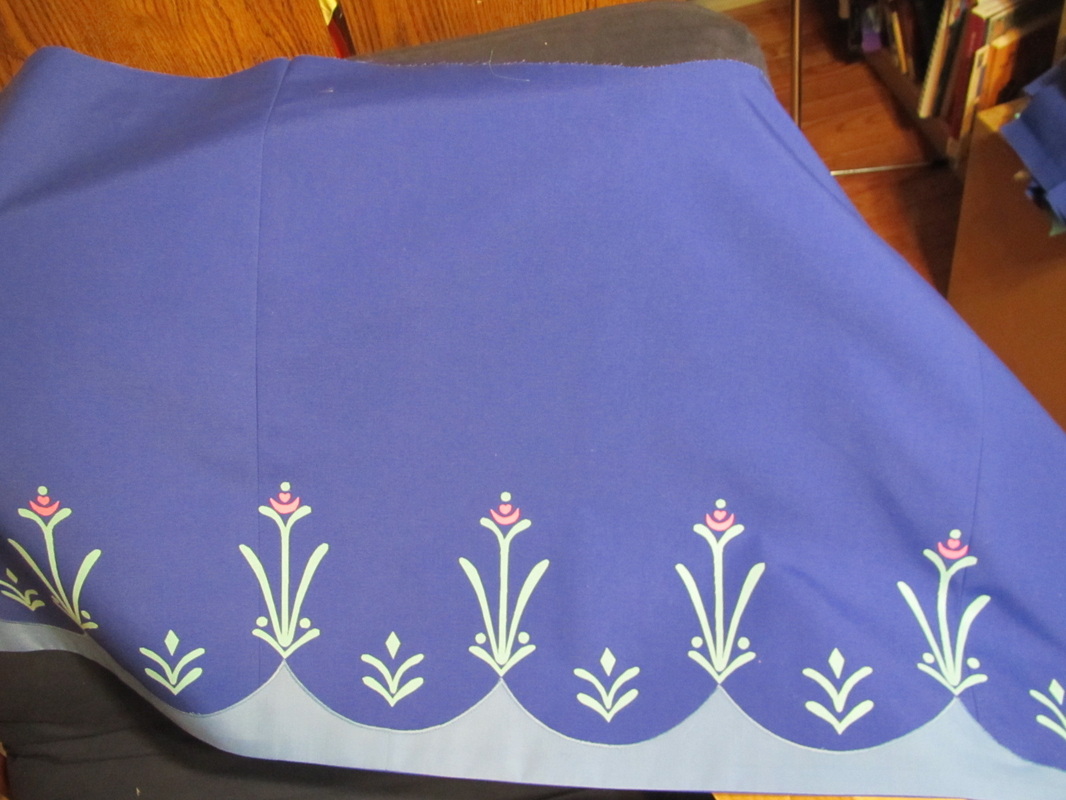
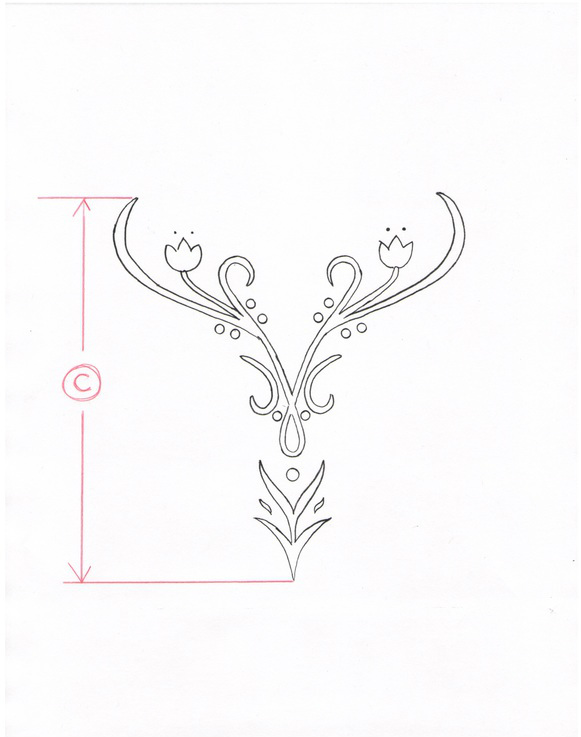
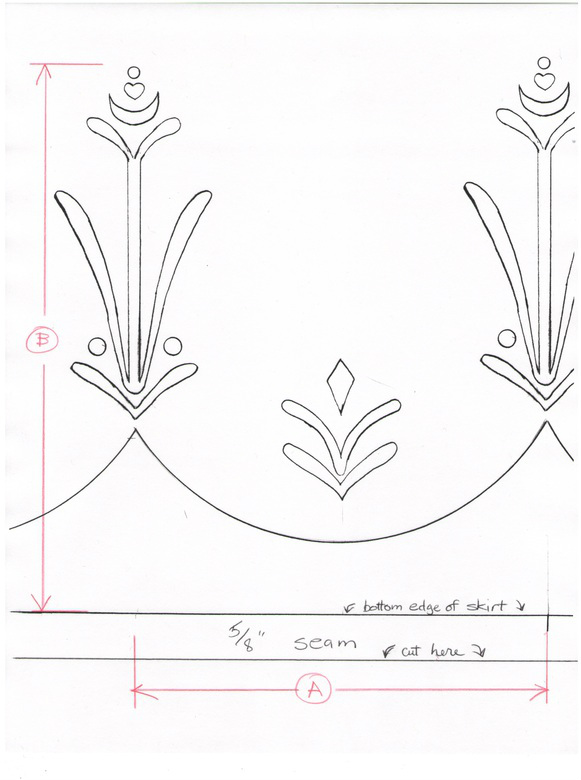
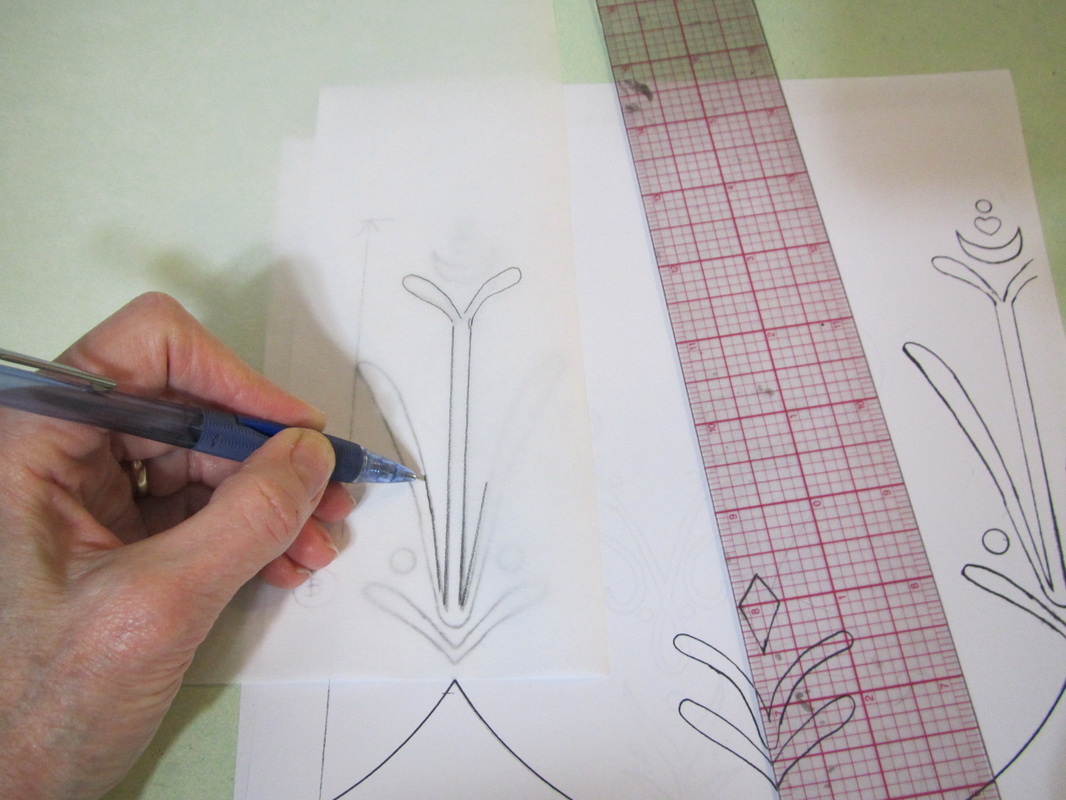
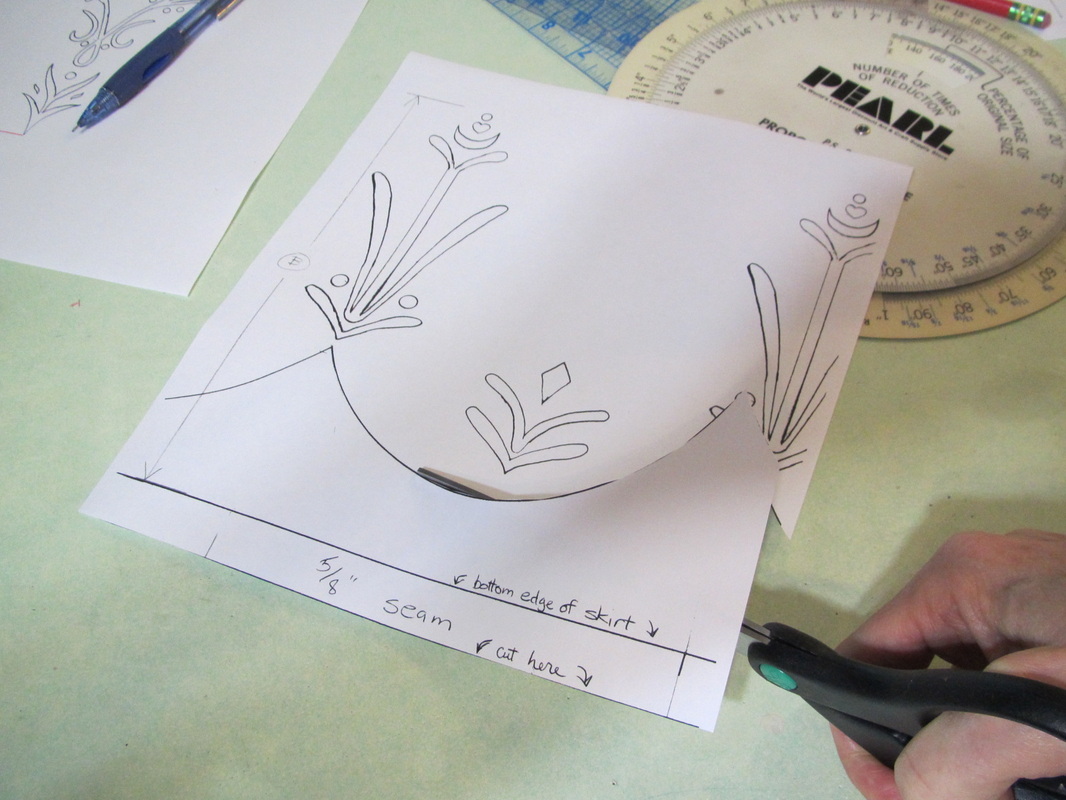
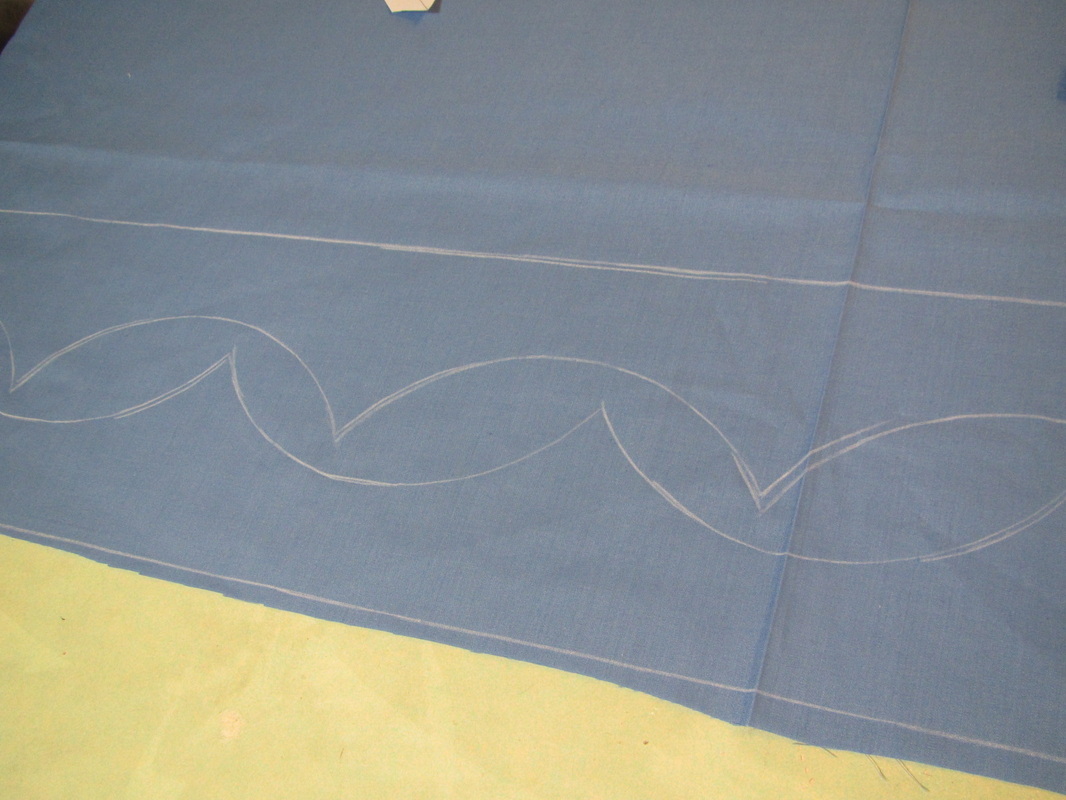
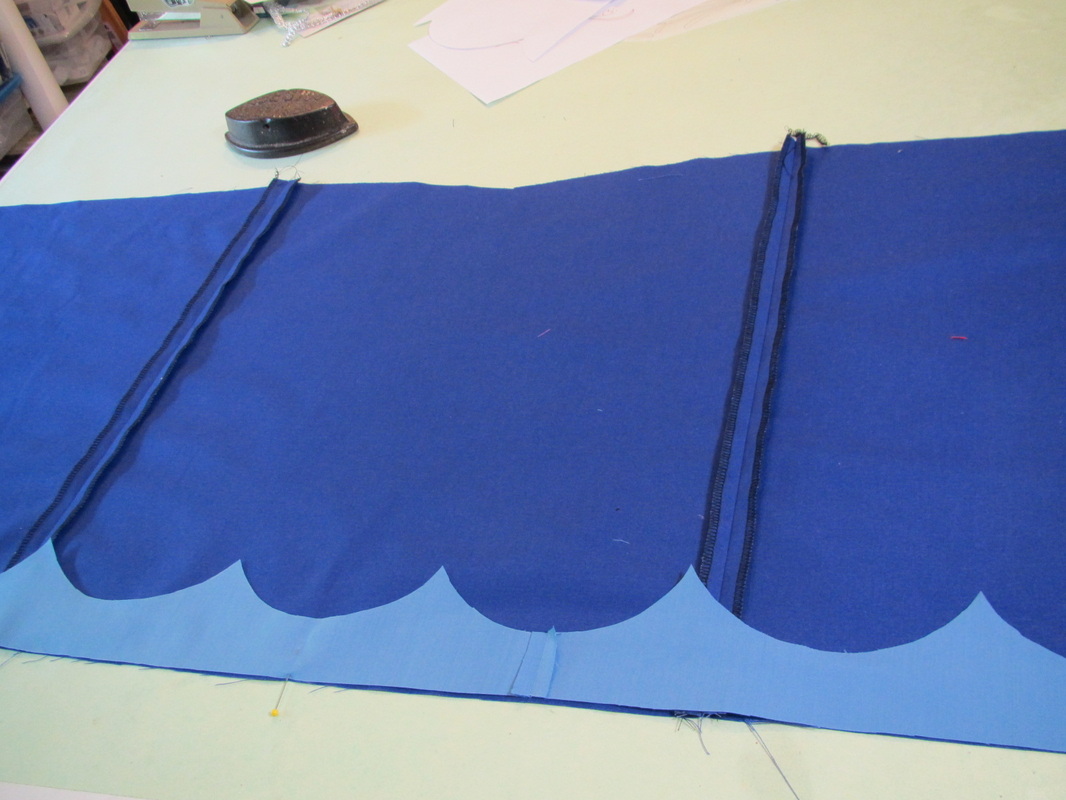
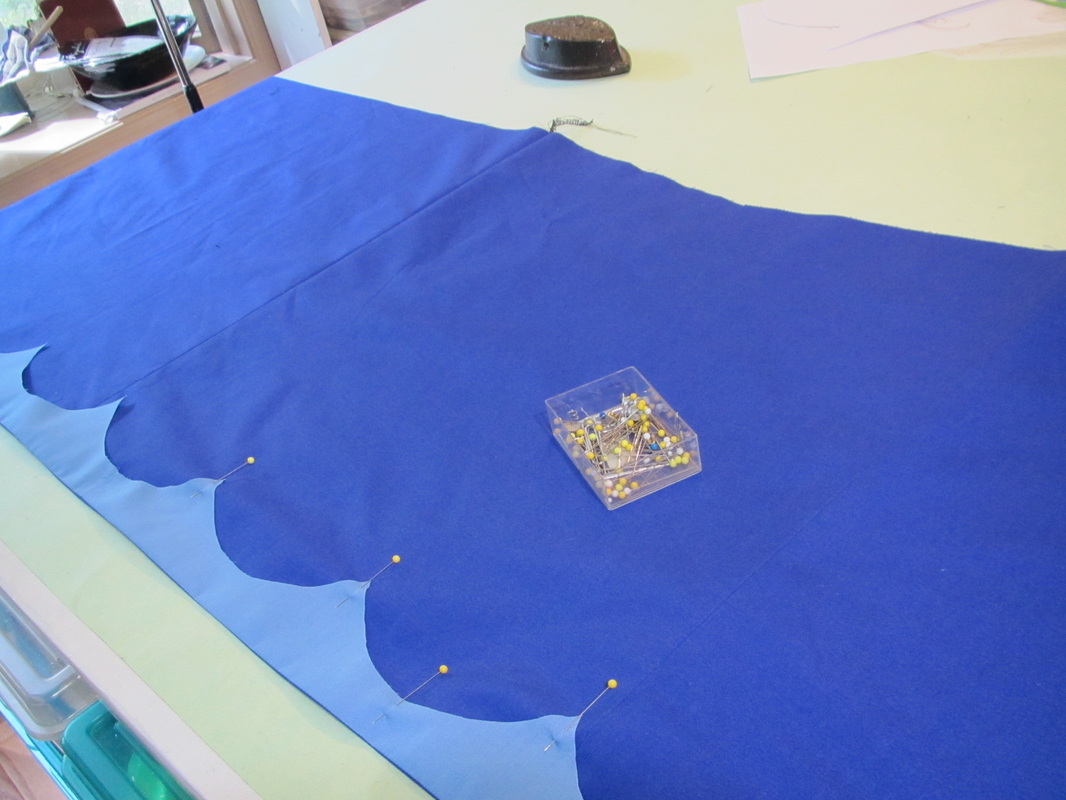
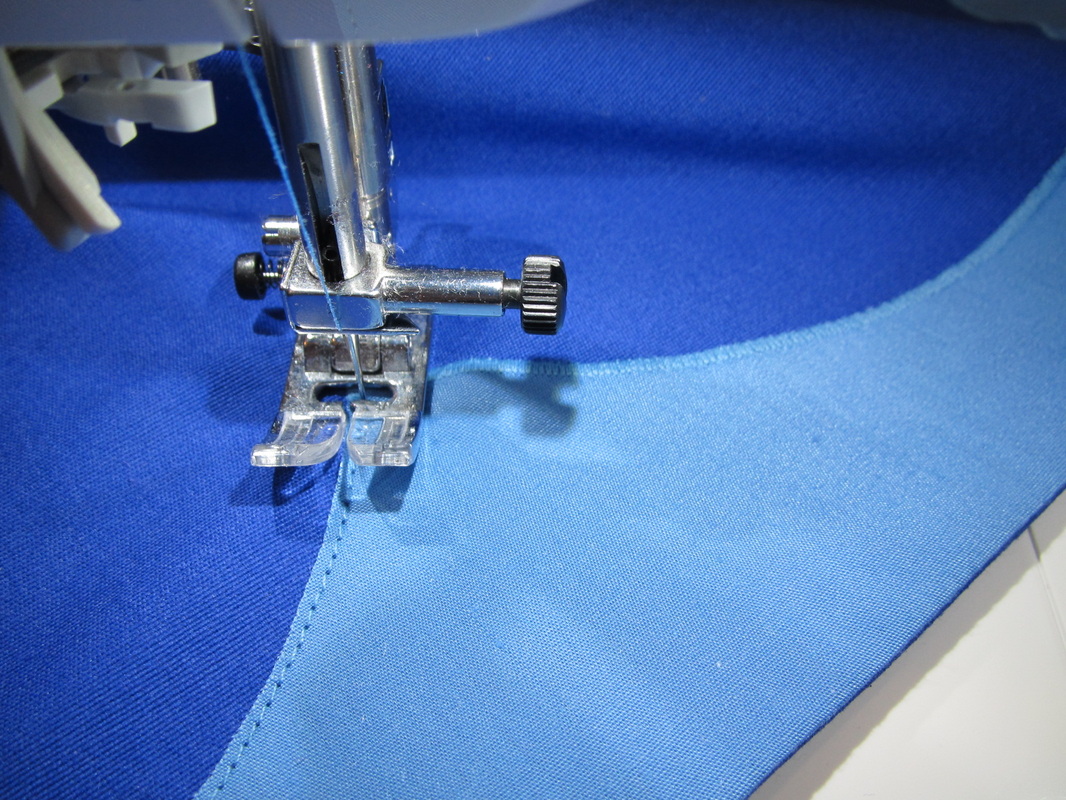
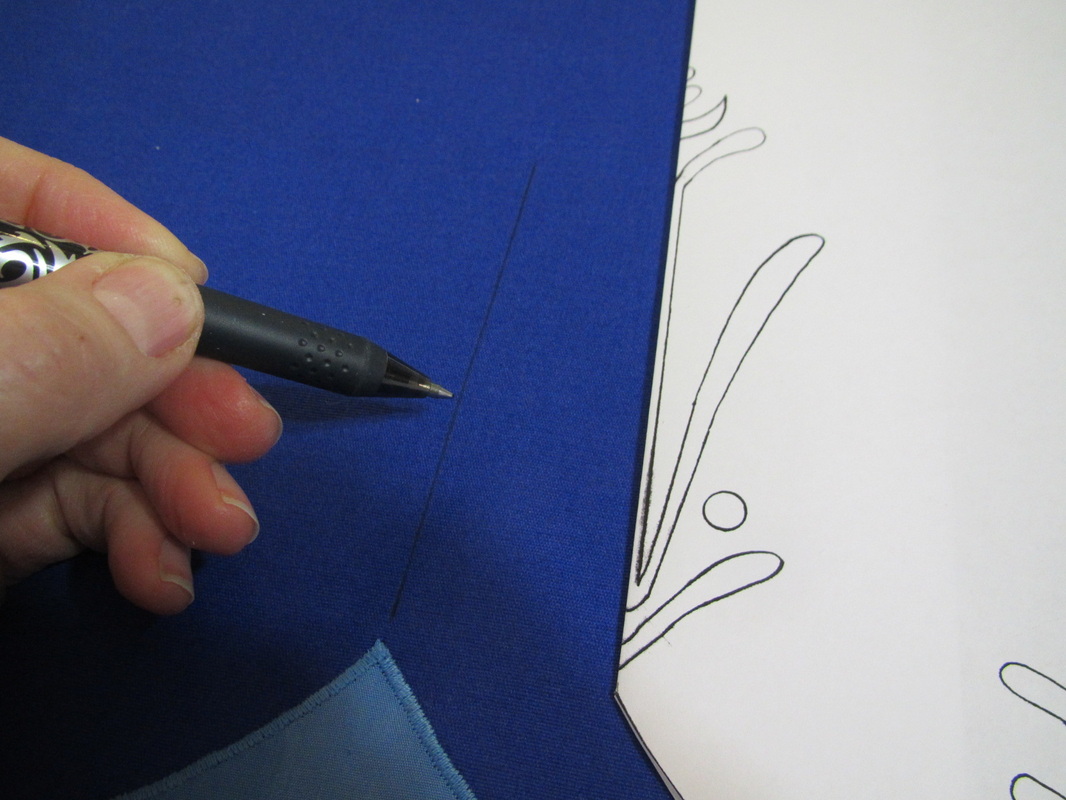
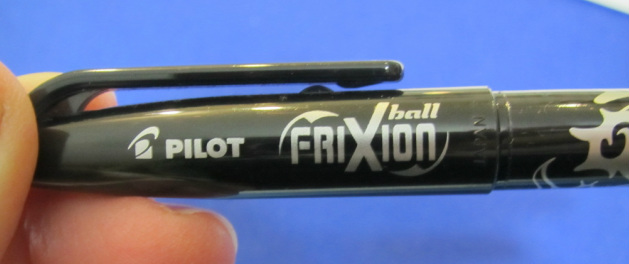
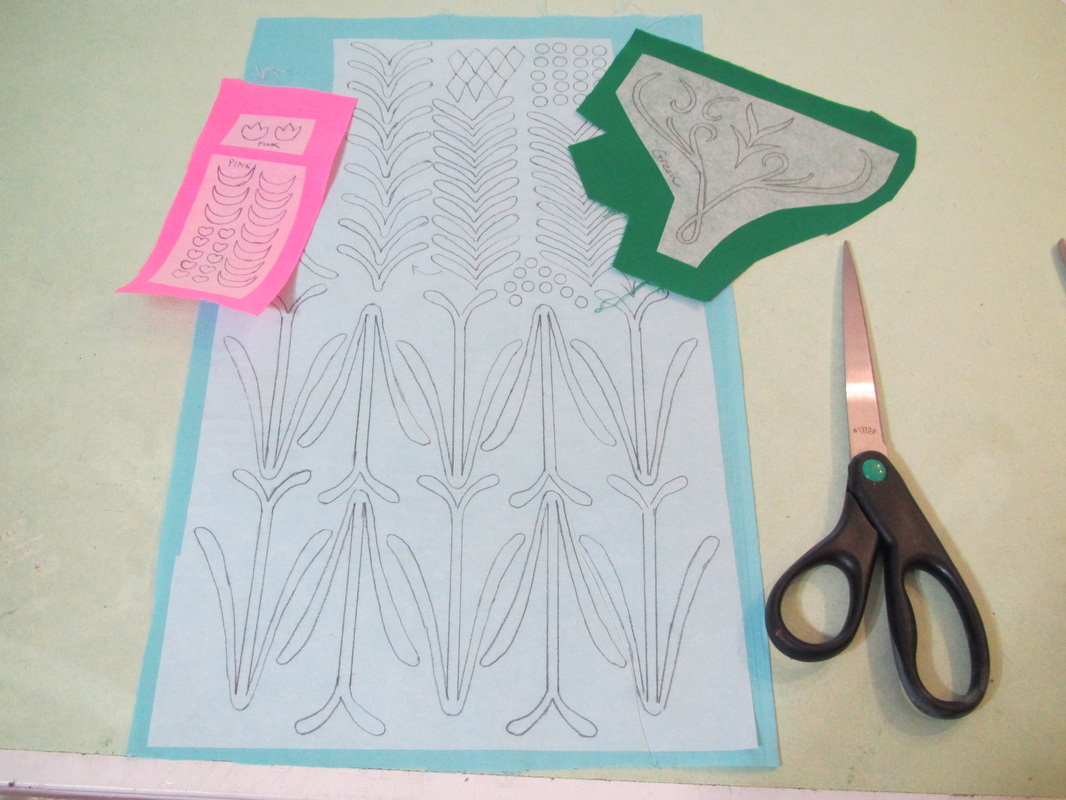
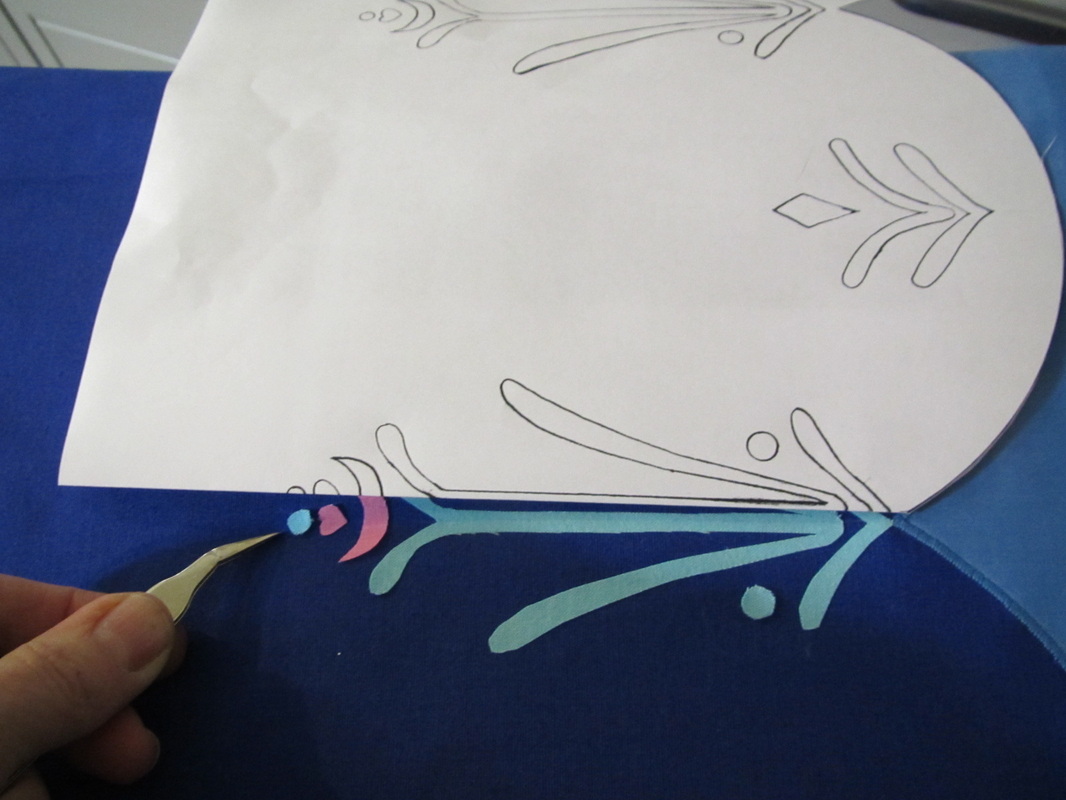
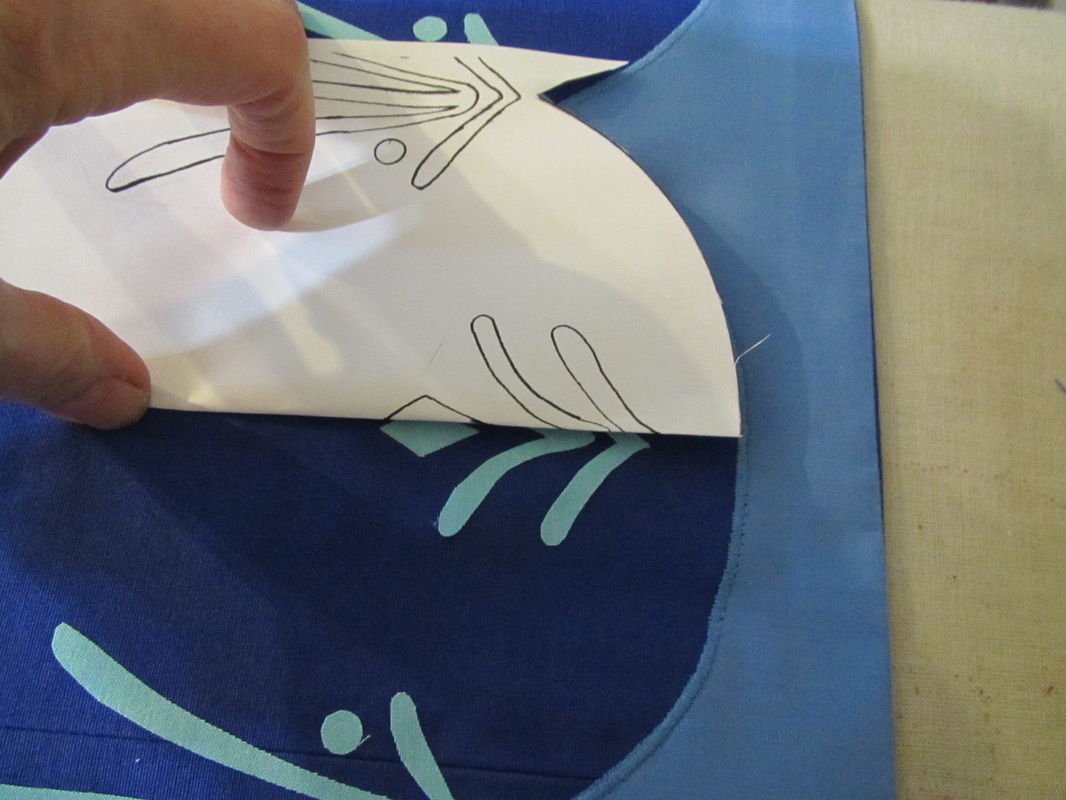
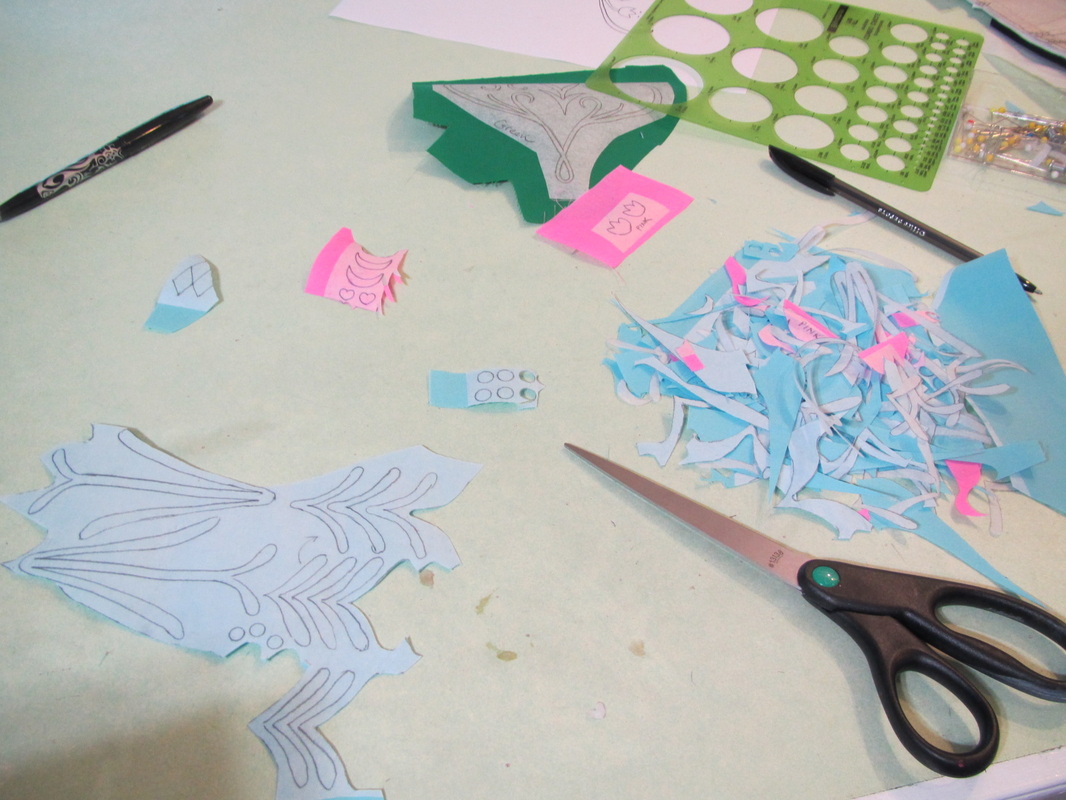
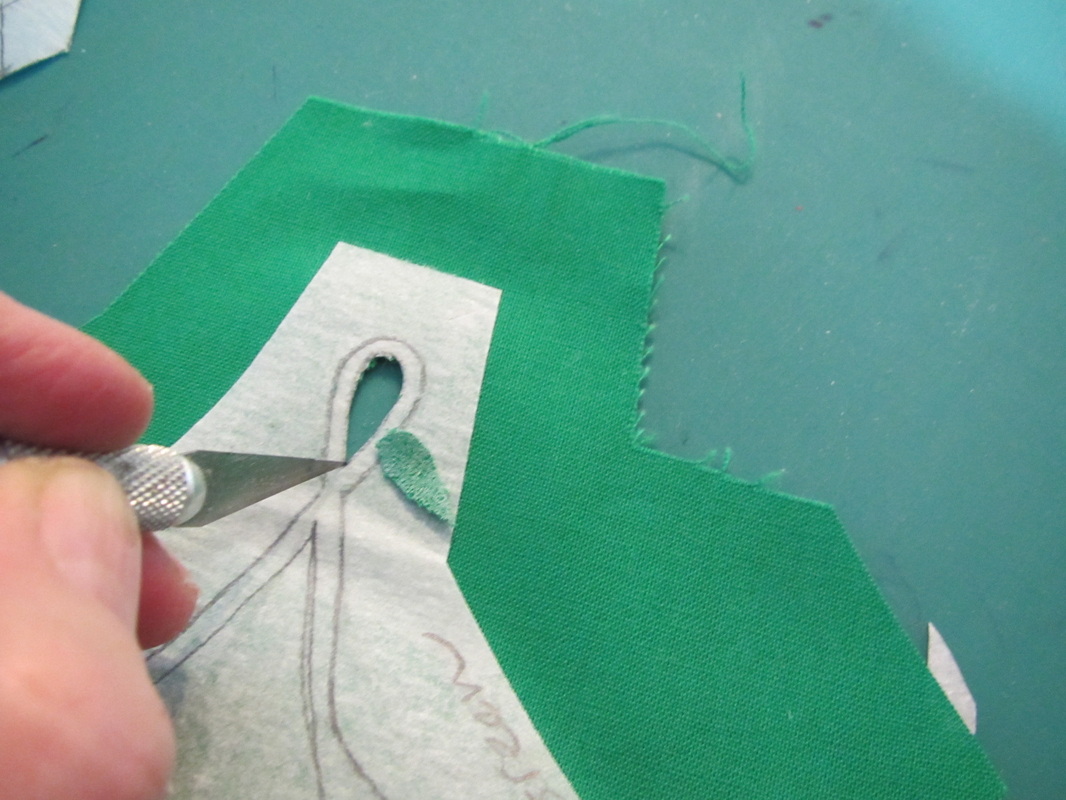
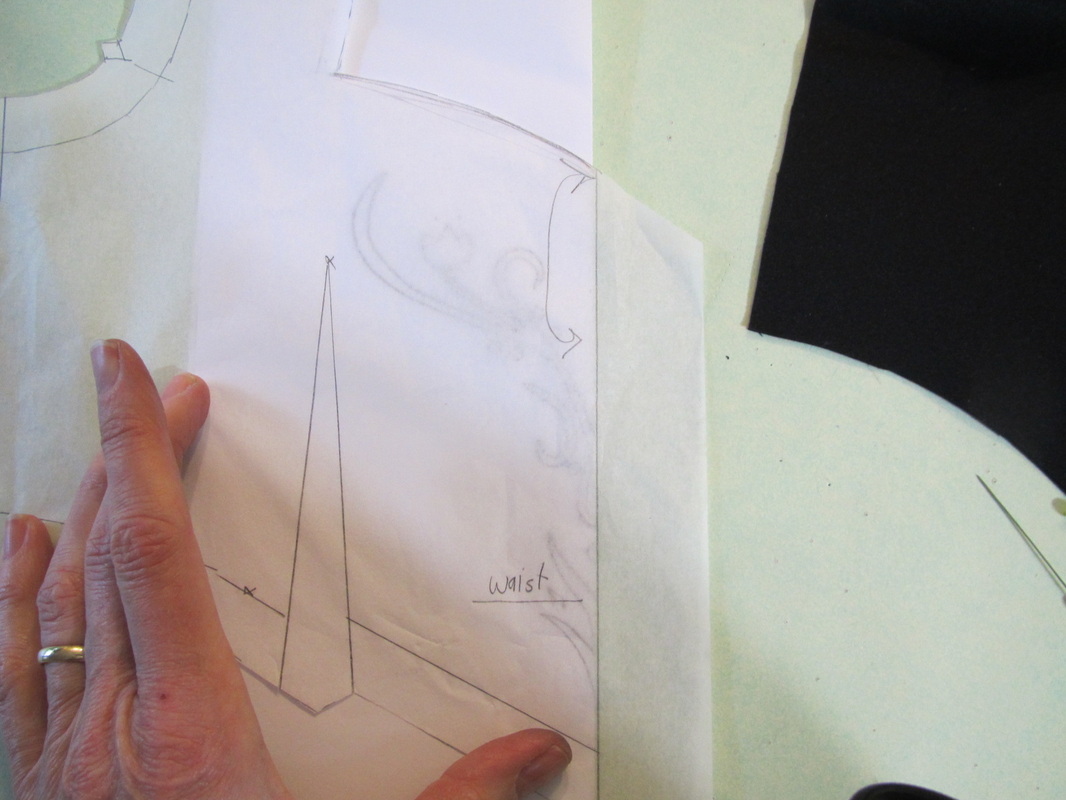
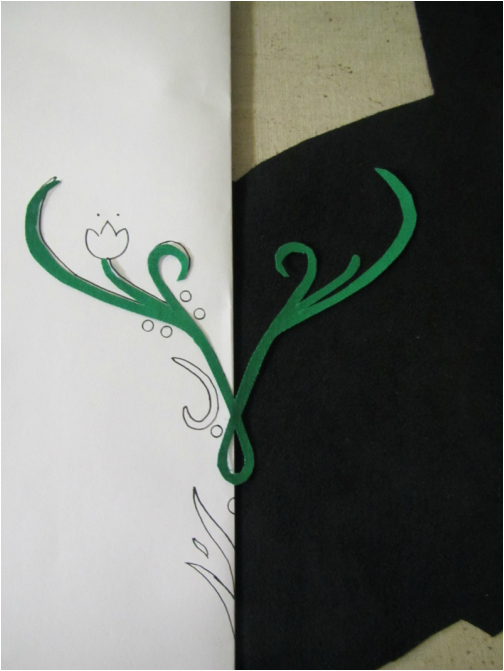
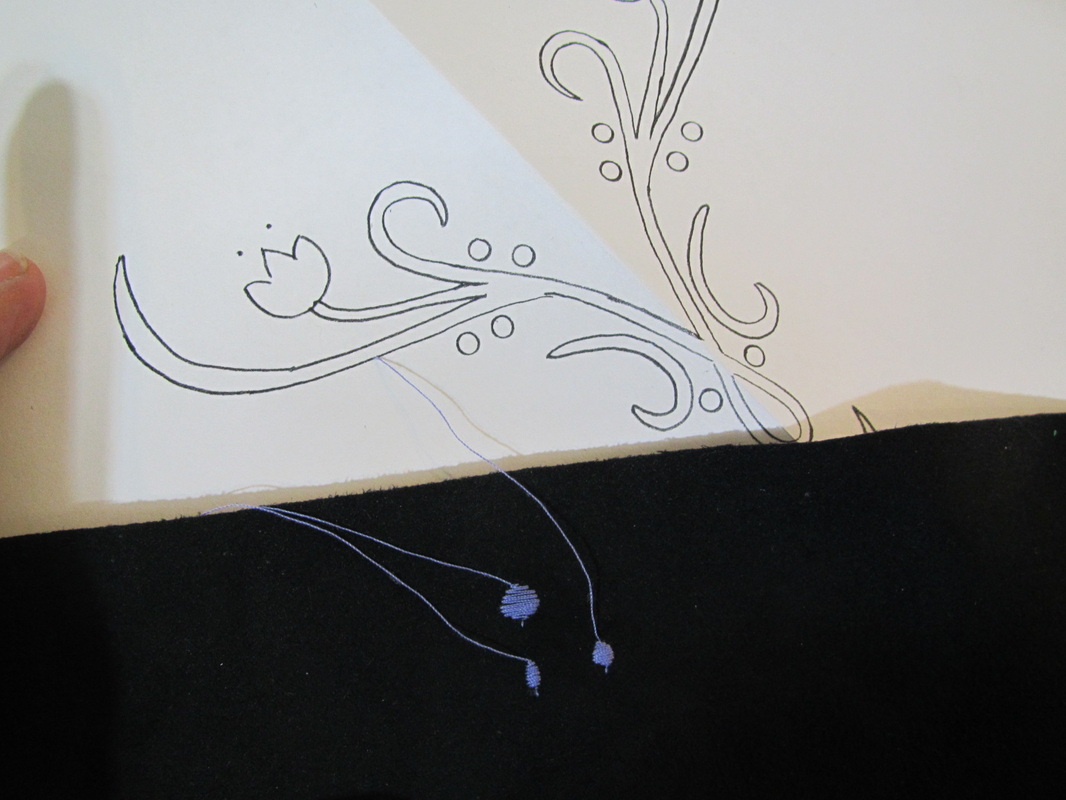
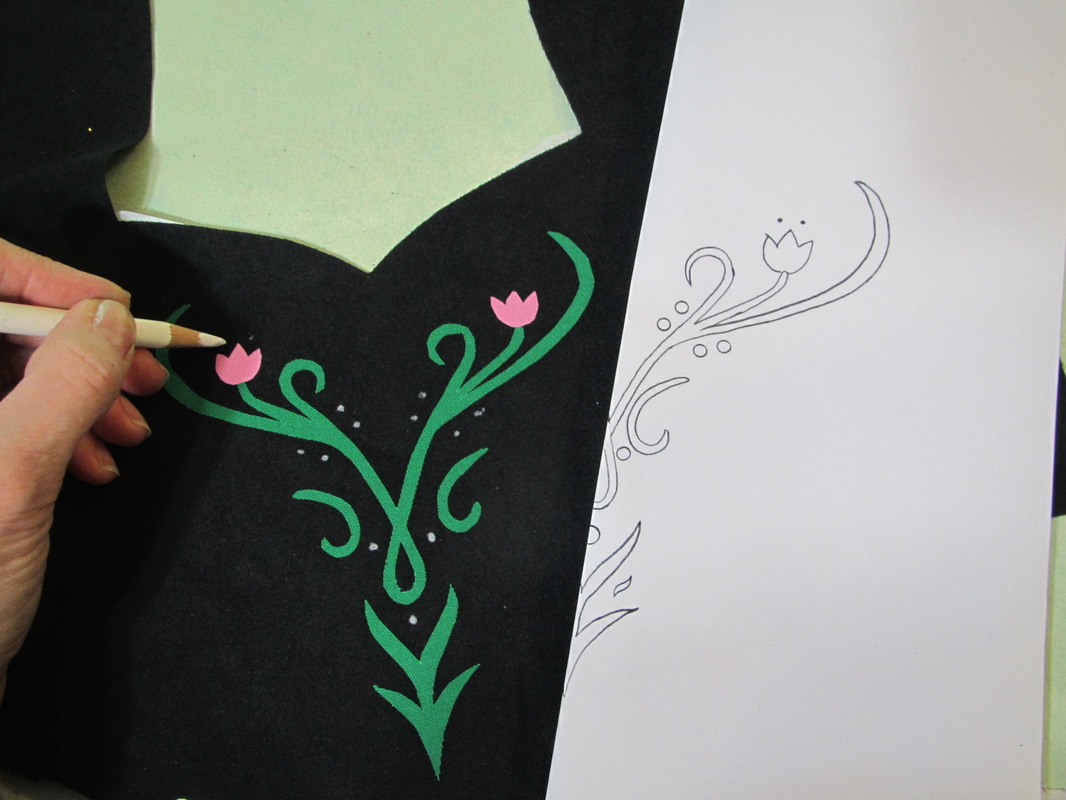
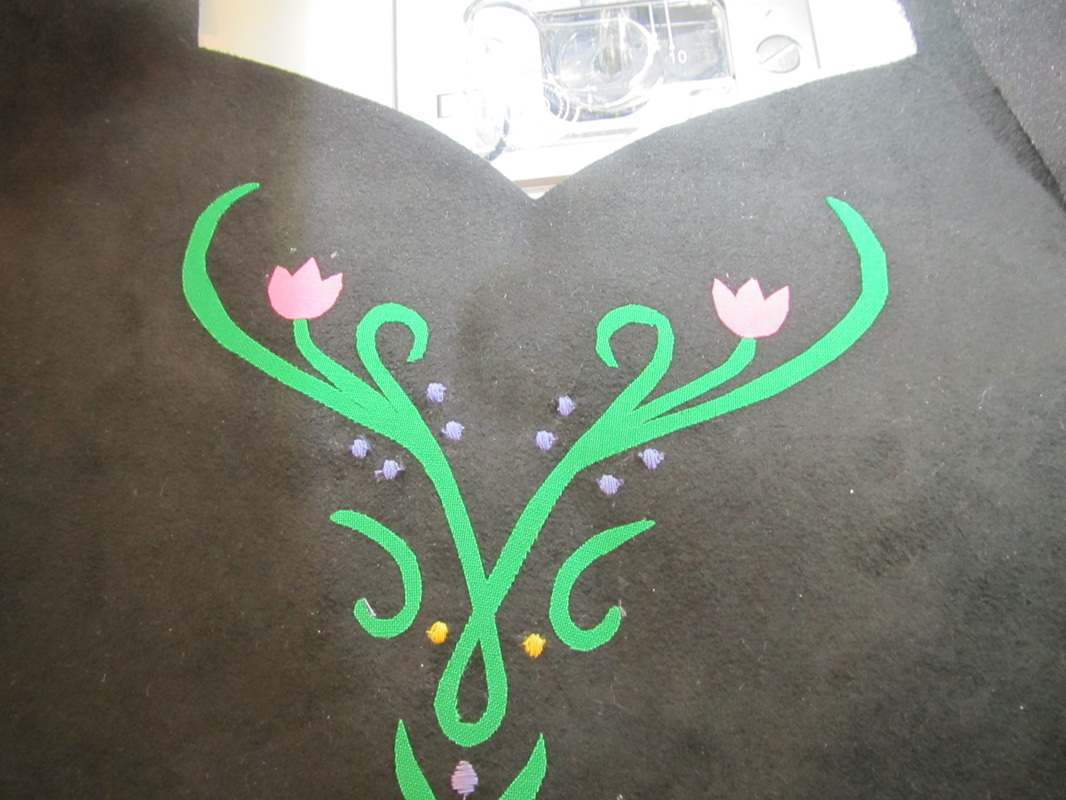
 RSS Feed
RSS Feed